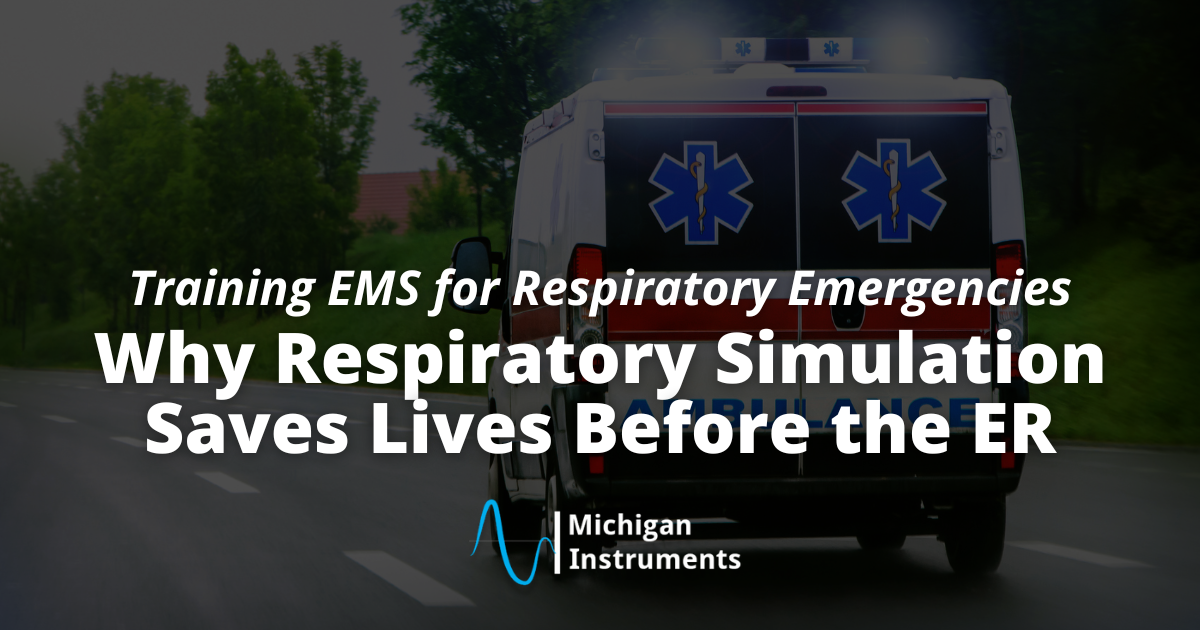For EMS providers, every second counts. In a respiratory emergency, rapid assessment and effective intervention can make the difference between life and death—often before a patient ever reaches the emergency room. That’s why simulation-based training has become such a vital part of EMS education.
By practicing with realistic lung simulators, EMS teams can prepare for high-pressure, pre-hospital situations in a safe, controlled environment—building the skills and confidence they need when real emergencies strike.
Why Respiratory Simulation Matters in EMS Training
Respiratory distress is one of the most common and critical emergencies that EMS professionals encounter. These patients often present with:
- Asthma attack
- COPD exacerbation
- Airway obstruction
- Pulmonary edema
- Trauma-related respiratory failure
In each case, EMS teams must quickly recognize the issue, choose the right intervention, and manage airway and ventilation under intense pressure and time constraint.
These split-second decisions can be overwhelming. Effective respiratory simulation bridges the gap by giving providers hands-on experience with realistic scenarios, without risk to real patients.
Key Benefits of Simulation for Pre-Hospital Respiratory Emergencies
- Realistic Practice Without Risk: Lung simulators replicate human physiology, allowing EMS providers to practice ventilation and resuscitation techniques without causing harm. This builds technical skill while reducing stress in actual emergencies.
- Training for Diverse Patient Scenarios: No two calls are the same. Simulators with adjustable compliance and resistance settings allow EMS teams to recreate conditions such as asthma, ARDS, or pediatric respiratory distress, which prepares them for a wide range of patient presentations.
- Immediate Feedback and Learning: High-quality systems provide measurable outcomes like tidal volume, pressure, and breath rates. This immediate feedback helps providers refine their technique and understand how equipment responds in real-world conditions.
- Team Readiness Under Pressure: Respiratory emergencies often require coordinated teamwork. Using respiratory simulation allows EMS crews to practice communication, role assignment, and decision-making under time-sensitive conditions, improving response efficiency in the field.
Michigan Instruments Tools That Support EMS Training
At Michigan Instruments, we design simulation systems that reflect real lung behavior to help EMS teams train with confidence. Our TTL®, Spontaneous Breathing Lungs and PneuView® Lung Simulators offer:
- Adjustable compliance and resistance to recreate different patient conditions
- Accurate volumes and pressures that respond to ventilators, BVMs, and airway tools
- Dual lung models for advanced scenarios such as asymmetric disease or ventilator sharing
- Analog and digital options to meet both classroom and data-focused training needs
These features make our simulators valuable tools not just for classrooms, but also for EMS agencies preparing providers for the high-stakes realities of pre-hospital care.
Simulation That Saves Lives
By training with realistic lung simulators, EMS providers gain the skills, precision, and confidence they need to act decisively during respiratory emergencies. The more prepared they are in training, the better outcomes they can deliver when every breath counts.
At Michigan Instruments, we’re proud to support EMS educators and teams with tools designed to strengthen respiratory training before patients ever reach the ER.
Explore our Lung Simulators today and learn how they can support your EMS training program.



